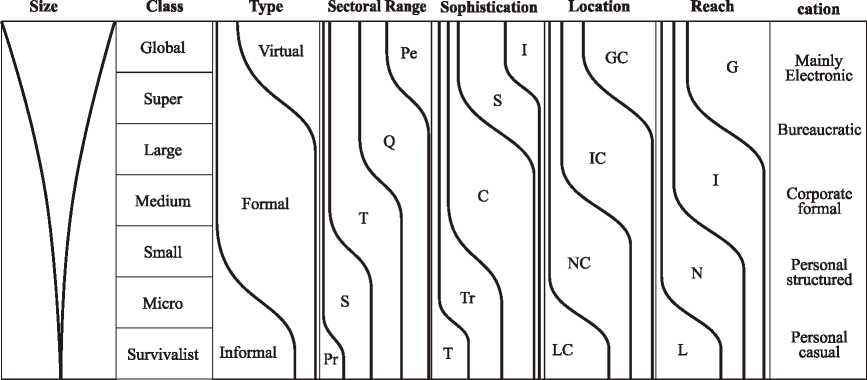enterprises and independent formal and informal producers are often linked to large
domestic firms and even multinationals (Aguilar, 1997; Geyer, 1988; 1989). One area
in which Southern urban markets could be exploited more vigorously lies in (i)
recognizing the inherent structure of the informal urban sector, (ii) expanding and
exploiting certain elements of it, and (iii) finding ways in which linkages between the
formal and informal urban sectors could be maximized to the benefit of Southern
economic society as a whole. One of the reasons why many of the unskilled people,
who migrate from rural areas to overcrowded cities in the South, enter the informal
urban market is because entering it normally does not require skills, especially at the
entry level. However, over-exploitation of the informal economic sector in the urban
South resulting in large numbers of vendors offering similar goods of similar quality
at the same location, and at cutthroat prices, leaving most of them with barely enough
income to survive, is a persisting problem (Penouil, 1981). On the other hand, the
formal economic sectors of the urban South, especially those in the deep periphery of
the globe not only have to battle against the odds in the global market place, they also
often have to cope with growing tax demands of capital hungry local governments to
foot their swelling social overhead bills, as well as informal activities that often
undermine their viability (Brown and Connell, 1993). As a result of a combination of
these factors the emphasis in the lagging developing countries of the world
increasingly falls on the lower levels of businesses shown in Figure 1.
Figure 1: Anatonomy of the business sector in the urban South
Level of Communi-

Pe = Pentenary*
Q = Quaternary
T = Tertiary
S = Secondary
Pr = Primary
I = Intellectual
S = Sophisticated
C = Conventional
Tr = Transitional
T = Traditional
GC = Global Centre
IC = International
Centre
NC = National Centre
LC = Local Centre
G = Global
I = International
N = National
L= Local
* refers to the intellectual sector (see Geyer 2002)
Indications are that the small and informal business sector in the urban South is
becoming more stratified (Figure 2). Traditional informal economic activities, i.e.
activities with a large local cultural content, such as local traditional medicine
practices, the selling of traditional cuisine, the manufacturing of traditional household
goods and equipment, form the lower stratum of the structure. The largest proportion
of demand for goods and products in this category lies in urban areas where local
population groups are concentrated. The transitional informal economic layer
contains businesses that provide goods and services that have some traditional
13
More intriguing information
1. Sustainability of economic development and governance patterns in water management - an overview on the reorganisation of public utilities in Campania, Italy, under EU Framework Directive in the field of water policy (2000/60/CE)2. Contribution of Economics to Design of Sustainable Cattle Breeding Programs in Eastern Africa: A Choice Experiment Approach
3. Analyzing the Agricultural Trade Impacts of the Canada-Chile Free Trade Agreement
4. The name is absent
5. The name is absent
6. The name is absent
7. The name is absent
8. An Interview with Thomas J. Sargent
9. A Regional Core, Adjacent, Periphery Model for National Economic Geography Analysis
10. National urban policy responses in the European Union: Towards a European urban policy?